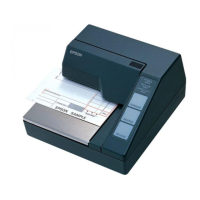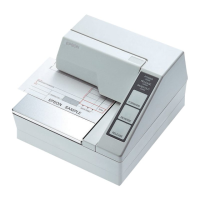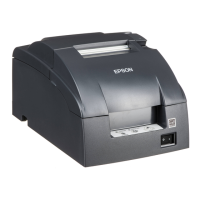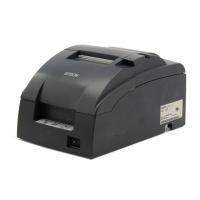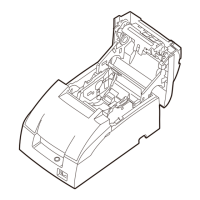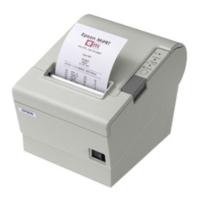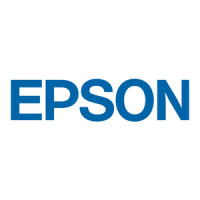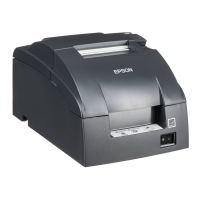EPSON
TITLE
SHEET
REVISION
NO.
SHEETNEXT
F
TM-U295/U295P
Specification
(STANDARD)
App.27App.28
10) When the printer has data to transmit to the host, the host is provided with three options as listed
below.
1.To set HostBusy(nAutoFd) low, indicating that the host is ready to accept additional data.
2.To remain in the Host Busy Data Available phase.
3.To proceed with termination and return to Compatibility Mode.
The procedures to start data transmissions from the Reverse Idle phase are same as in the Nibble
Mode.
H.2.6 Device ID
Device ID is a string of characters to identify a device connected through the interface.
The printer will respond to the request by the host for the Device ID with the following Device ID.
<00>h<31>h
MFG: EPSON;
CMD: ESC/POS;
MDL: TM-P1.00;
CLS: PRINTER;
The first two bytes indicate the length of the entire Device ID including those two bytes.
For request of Device ID, refer to the section under Negotiation.
The host is required to accept a complete string of Device ID having a length indicated by the first two
bytes and it is not allowed to terminate the Device ID reception in progress until the entire Device ID is
received. If the host terminates the Device ID transfer before all bytes have been transferred, the
printer will discard the remainder of the Device ID string. Then, when the host requests Device ID
again, the printer sends the ID from the beginning.
Once the host has received a complete string of Device ID having a length indicated by the first two
bytes, it shall proceed with termination even if the printer has more data to transmit to the host (Data
Available). If the host attempts to accept additional data without termination, the printer status will be
sent.

